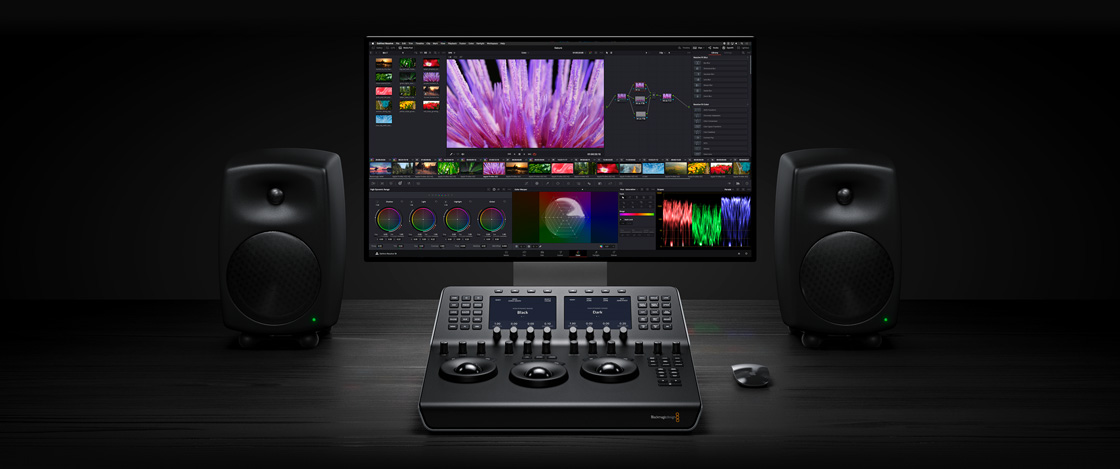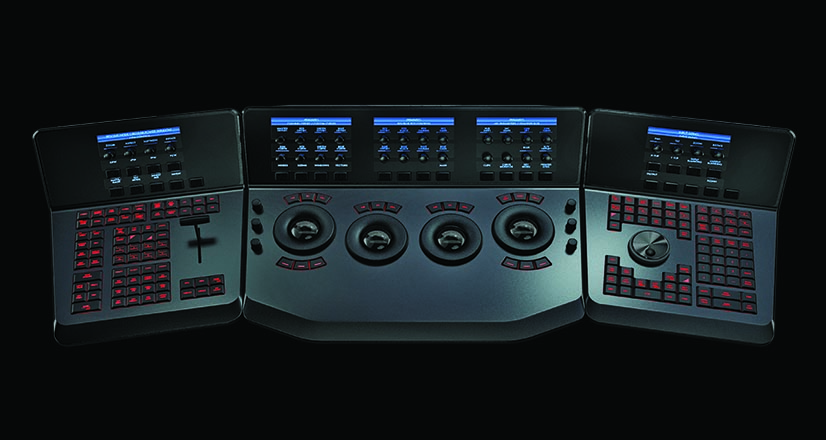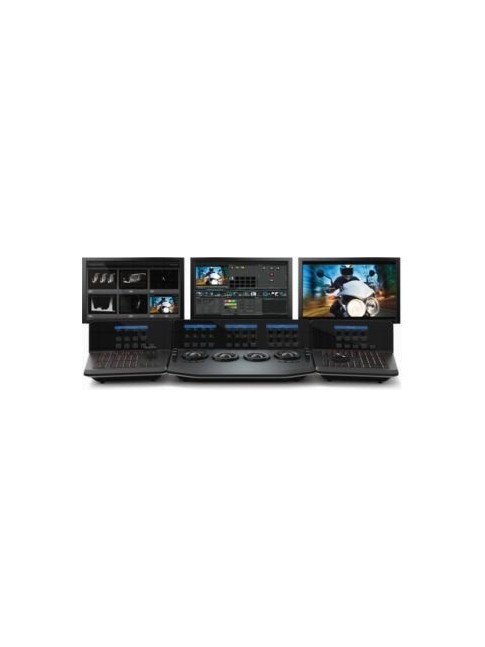

- #BLACKMAGIC DESIGN DAVINCI RESOLVE ADVANCED PANEL UPDATE#
- #BLACKMAGIC DESIGN DAVINCI RESOLVE ADVANCED PANEL FULL#
- #BLACKMAGIC DESIGN DAVINCI RESOLVE ADVANCED PANEL PRO#
- #BLACKMAGIC DESIGN DAVINCI RESOLVE ADVANCED PANEL OFFLINE#
#BLACKMAGIC DESIGN DAVINCI RESOLVE ADVANCED PANEL UPDATE#
UPDATE 3-3-17: Alexis Van Hurkman has taken an early look at these new panels and this is what he says about non-Resolve software support: “The only caveat I would mention is that this panel only works with DaVinci Resolve. Sure the buttons and knobs wouldn’t be quite the same but a lot of if would.
#BLACKMAGIC DESIGN DAVINCI RESOLVE ADVANCED PANEL PRO#
I can’t help but wonder if someone somewhere somehow will make these new Resolve surfaces work with Premiere Pro since it can support color control surfaces now. As Adobe Premiere Pro CC continues to mature and update the Lumetri color tools we can expect to see more products using it and staying in the Premiere pipeline as that Resolve conform is something many will try to avoid. But they still have the advantage of working with software beyond Resolve. I think those Tangent panels are most vulnerable in the market with these new Resolve panels out in the wild. The real questions is how will the Tangent Wave and Tangent Element fare again the Resolve Micro and Mini. I see them as different products that can co-exist though when you do see them side-by-side they look quite different. Since it doesn’t have extra dedicated buttons it really is a panel you’re using mainly for the dials and trackerballs. The Ripple (and Wave and Element) can be used with more grading software beyond Resolveīut Grant is right that the Ripple is plastic and will feel like a lower quality product.


I don’t see the Resolve Micro Panel killing off the Ripple as the Ripple has a few advantages: It truly was (and still is) the most affordable grading surface out there. Tangent made a big splash at NAB 2016 when they introduced the Tangent Ripple. That translates as bringing more people to Resolve as well as there wouldn’t be as many dedicated Resolve users out there if it wasn’t for the Tangent panels which have been around for years. In fact the press release even mentions “cheap panels on the market.” I don’t think it’s quite the dig that it sounds as Grant made it a point to mention in the news conference that BMD appreciates that these “cheap” panels have brought color grading to even more of the masses. It seems like Blackmagic is taking aim at Tangent and their affordable panels like the Ripple, Wave and Element system. You can buy these new panels now at any of those places you buy Blackmagic products. Detail of the right side of the Micro panel. A detail of the left side of the Micro panel.

The $995 DaVinci Resolve Micro panel is by far the most affordable Blackmagic panel and takes aim squarely at Tangent as the “cheapest” grading panels out there.
#BLACKMAGIC DESIGN DAVINCI RESOLVE ADVANCED PANEL FULL#
The full press conference is available below. It also might mean there’s a few dedicated colorists out there shaking their fists in anger.
#BLACKMAGIC DESIGN DAVINCI RESOLVE ADVANCED PANEL OFFLINE#
There’s no denying that BMD are wanting editors to edit in Resolve and these new panels might just push some full workflows into Resolve for creative offline if they know they can now affordably use panels with Resolve. I’m not sure I believe Grant Petty’s statement in the press conference when he said “more people are editing now on DaVinci now than actually doing color correction” but okay. While I’m sure the new URSA Mini Pro will be all the talk it’s the two new color grading panels for Resolve that are of interest to many of us in post-production. In what was a pre-NAB post-Christmas big bag of goodies Blackmagic held a live-stream press conference on March 2 and introduced a batch of products that most would have thought to be the cornerstone of their NAB announcements.


 0 kommentar(er)
0 kommentar(er)
